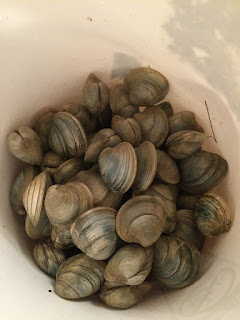My answer is, “William Howard purchased the island from Richard Sanderson who inherited the island from his father, also named Richard Sanderson. That Richard Sanderson bought the island from English Quaker, John Lovick, who was granted Ocracoke by the Lords Proprietors. In 1663 & 1665, eight Lords Proprietors were granted the territory of Carolina (at that time, all of the land between 31° and 36° north latitude, and extending from the Atlantic to the Pacific) by Charles II, King of England, Scotland, and Ireland, and newly restored to the English throne.
"Of course," I always point out, “King Charles stole the island from the Native Americans!”
In 2015 Dale Sanderson, a direct descendant of the Sandersons visited Ocracoke on a journey tracing his family roots. You can read about that visit here: http://www.ocracokecurrent.com/107262.
 |
| Dale Sanderson |
The elder of the two Richard Sandersons (c. 1665-1733) was a sea captain, and probably
born in Currituck County, NC. He served as justice of the Currituck Precinct Court,
was later a justice of the General Court, and at various times held seats in
both the lower and upper houses of the Colonial Assembly. He was active in the
militia, and was a vestryman in his Anglican parish.
Richard Sanderson. Sr. was also owner and master of several sloops
and brigantines, and had extensive land holdings in coastal North Carolina,
including, as we know, Ocracoke Island. He regularly sailed along the coast as far as the
West Indies transporting trade goods. Sanderson, as well as the previous owners
of Ocracoke, never lived on the island. He used the island merely to raise horses,
cattle, sheep, and hogs.
At Sanderson’s death the ownership of Ocracoke Island passed
to his son, also named Richard. In 1759 the younger Sanderson sold the island to
William Howard for 105 British pounds. William Howard, who may have been one of
the early pilots at Ocracoke Inlet (as well as Blackbeard’s quartermaster), was
the first European owner to make his home on the island.
This month's Ocracoke Newsletter is Lachlan Howard's essay about the Fresnel Lens and its use in theater, solar ovens, cameras, and industry, as well as lighthouse illumination. You can read it here: https://www.villagecraftsmen.com/the-fresnel-lens/.



























